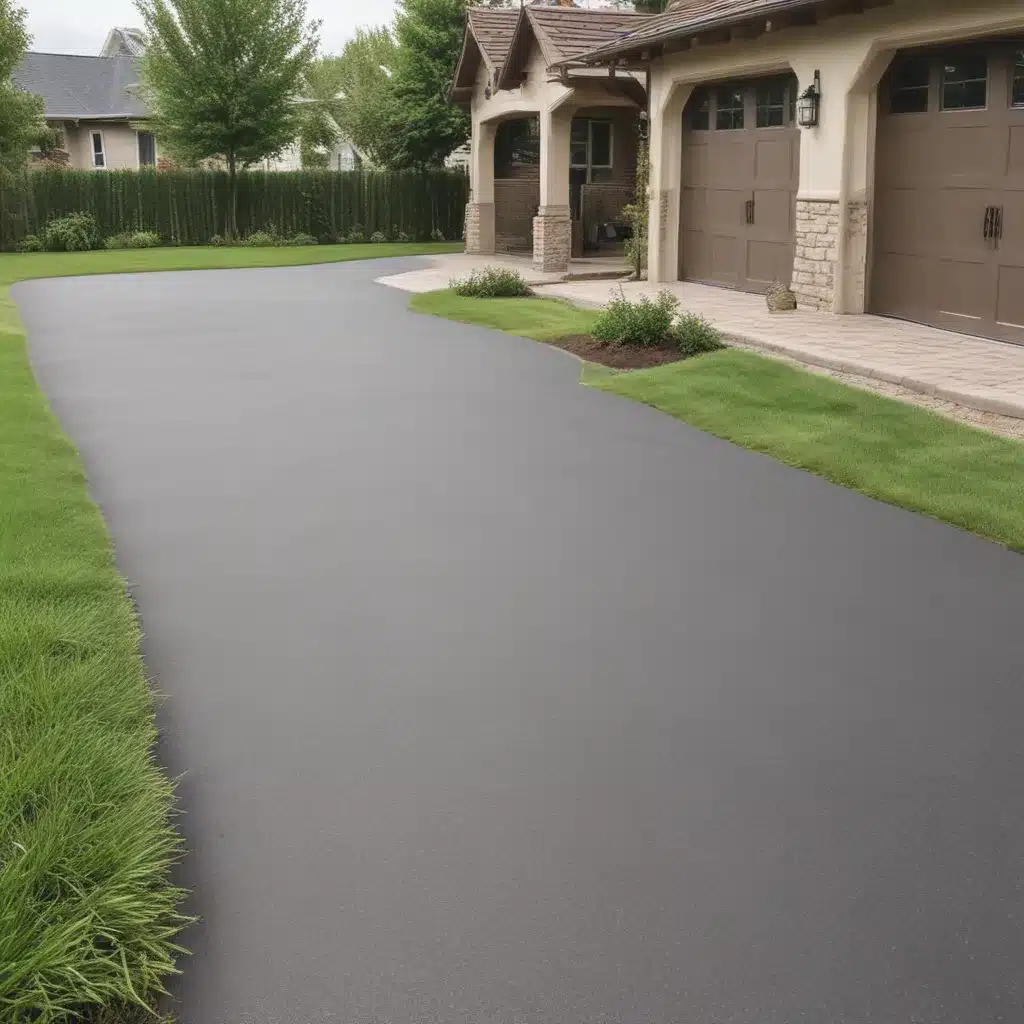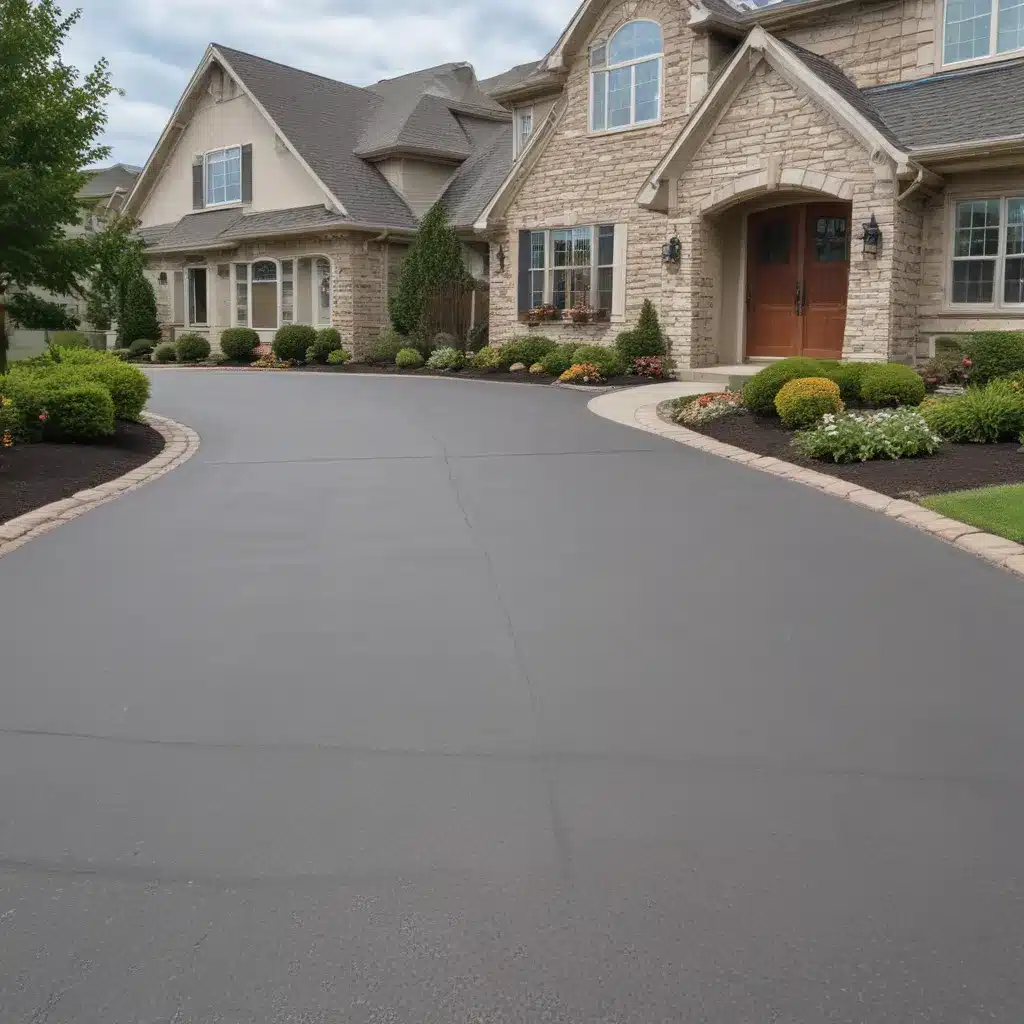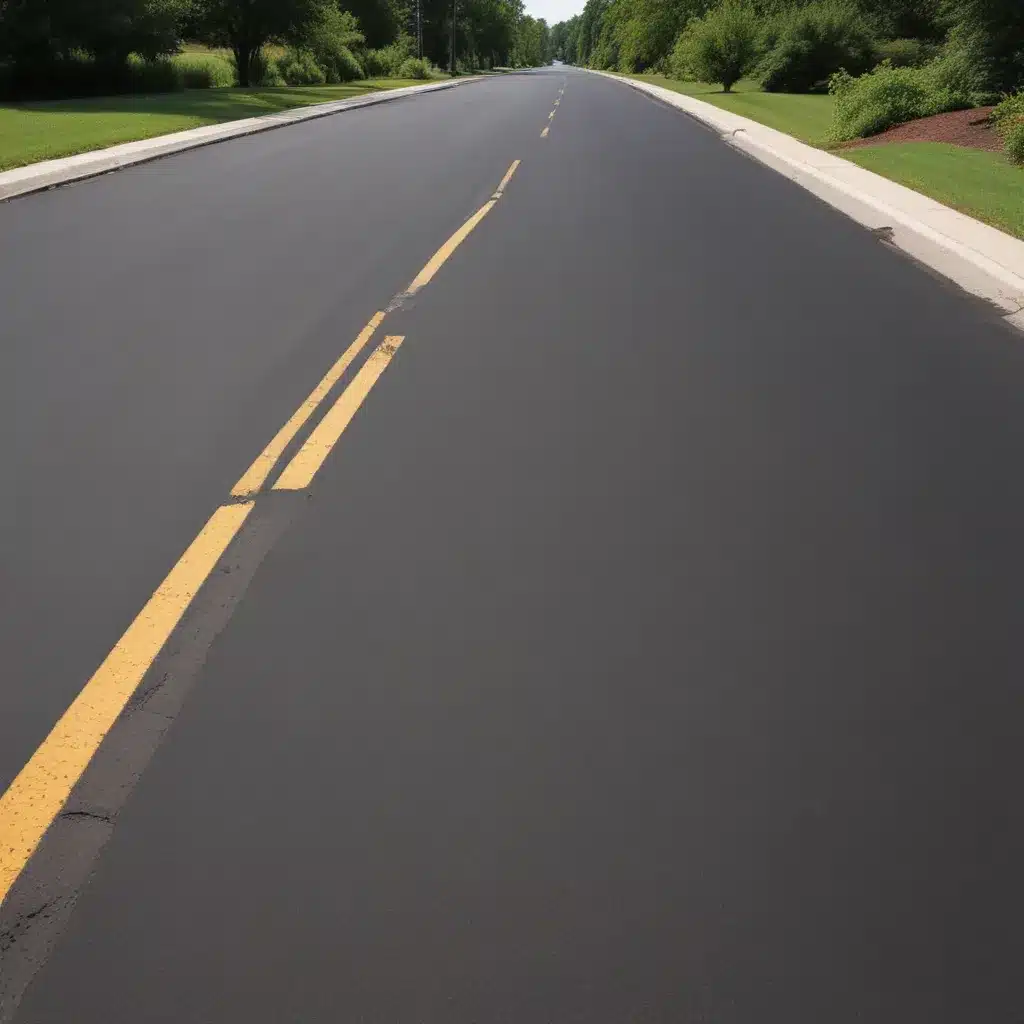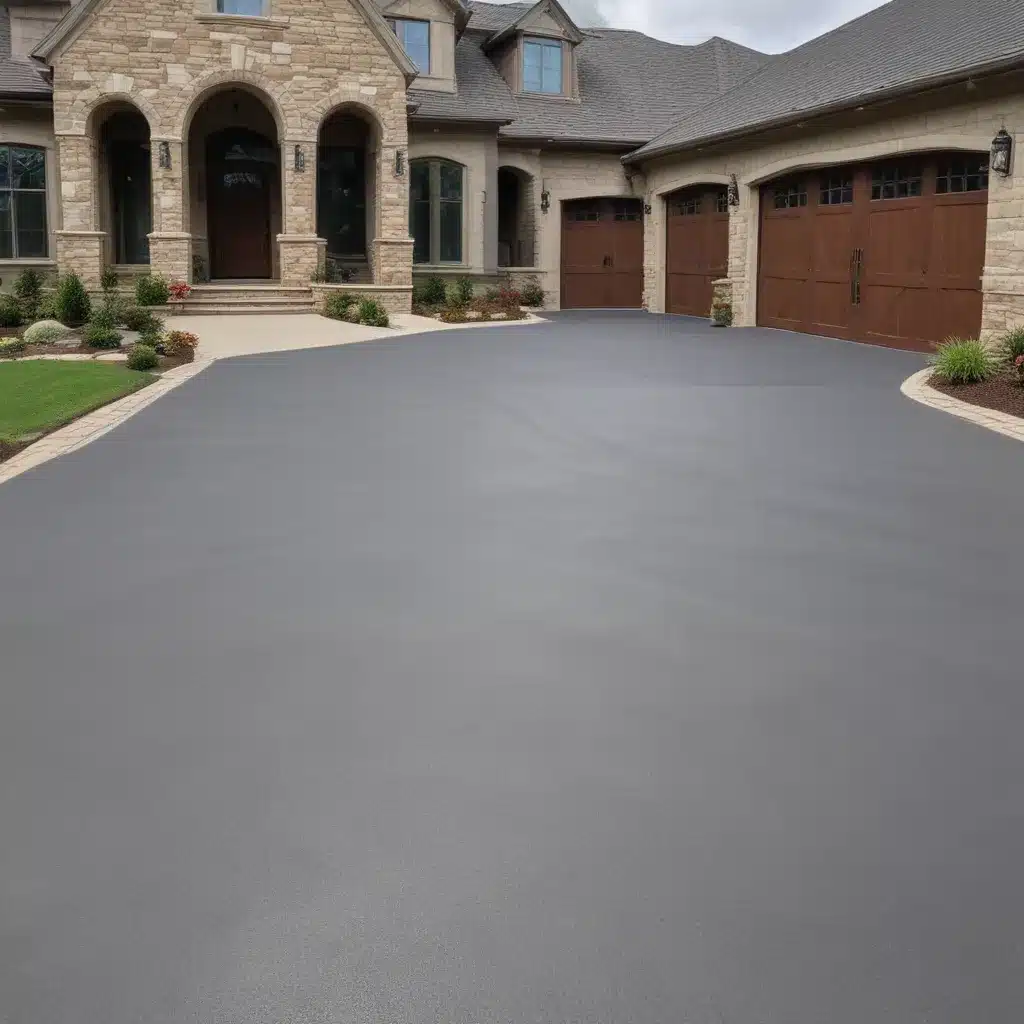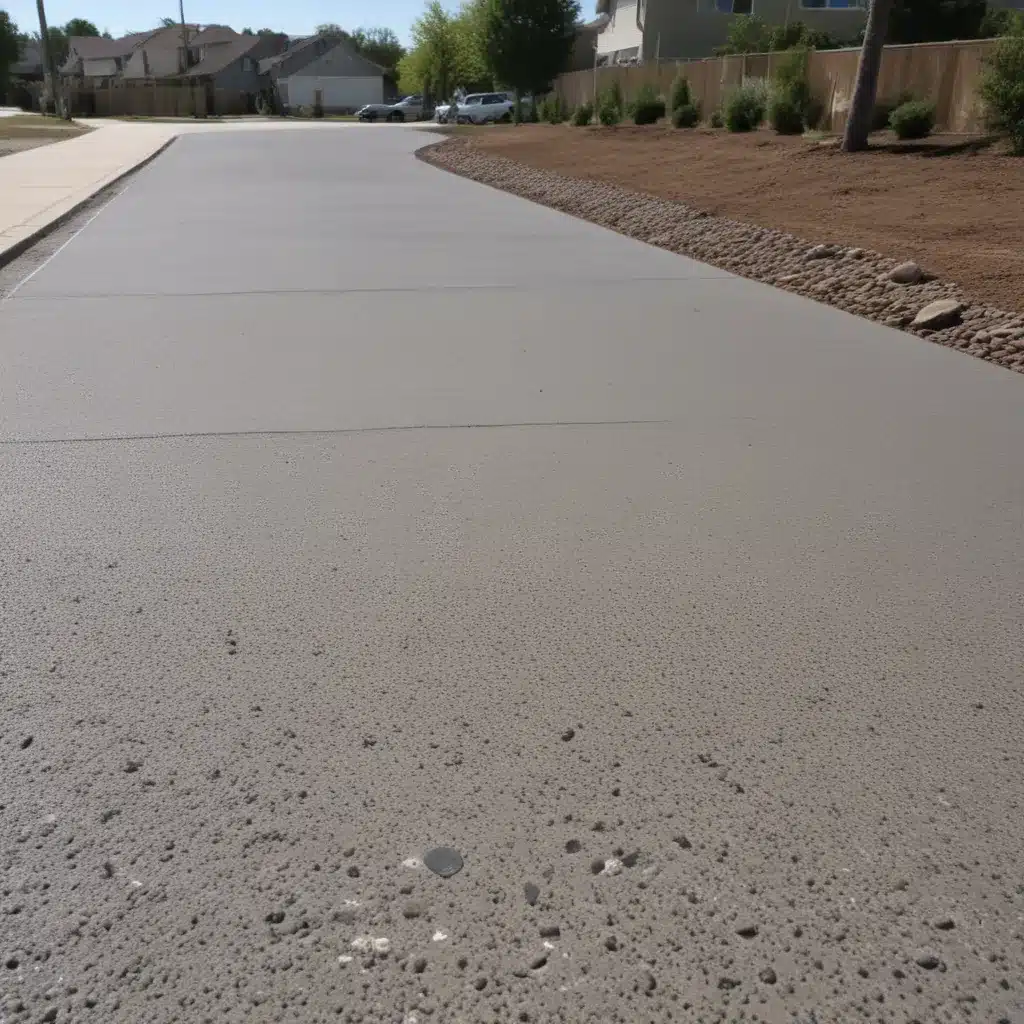Paving the Way to a Greener Future
As I gaze out at my driveway, I can’t help but feel a slight pang of guilt. Sure, it’s a practical necessity, allowing me to park my car and provide easy access to my home. But let’s be honest – most driveways are nothing more than vast expanses of lifeless concrete or asphalt, contributing to the ever-growing problem of environmental degradation.
But what if I told you that there’s a better way? A way to transform this utilitarian space into a true reflection of my commitment to sustainability and environmental consciousness? Welcome to the world of eco-friendly driveways, where function meets eco-friendly form.
The Environmental Impact of Traditional Driveways
Before we dive into the world of sustainable driveway solutions, let’s take a moment to acknowledge the not-so-pretty side of traditional driveway materials. Conventional concrete and asphalt driveways are notorious for their negative impact on the environment.
The production of these materials is energy-intensive, requiring the extraction and processing of raw materials like limestone, sand, and oil. This process releases significant amounts of greenhouse gases into the atmosphere, contributing to climate change.
Moreover, the impervious nature of concrete and asphalt driveways disrupts the natural water cycle. Instead of allowing rainwater to gradually seep into the ground, these surfaces funnel water into storm drains, leading to increased runoff and potential flooding. This can also contribute to the pollution of nearby waterways, as the runoff carries debris, oil, and other contaminants.
But the problems don’t stop there. Traditional driveways also contribute to the urban heat island effect, absorbing and trapping heat, which can lead to higher temperatures in surrounding areas. This, in turn, increases the demand for energy-intensive cooling systems, perpetuating the cycle of environmental degradation.
Embracing Eco-Friendly Driveway Solutions
Faced with the overwhelming environmental challenges posed by traditional driveway materials, it’s clear that we need to explore more sustainable alternatives. And the good news is, there are a growing number of eco-friendly driveway options available that can help us pave the way to a greener future.
Permeable Pavement: Letting Nature Do its Thing
One of the most promising eco-friendly driveway solutions is permeable pavement. Unlike impervious concrete or asphalt, permeable pavement is designed to allow water to infiltrate through the surface and slowly percolate into the ground. This not only helps to reduce stormwater runoff and minimize the risk of flooding, but it also recharges groundwater supplies and prevents the pollution of nearby waterways.
Permeable pavement comes in a variety of forms, including porous concrete, permeable pavers, and even gravel-based systems. Each option has its own unique benefits and considerations, but they all share the common goal of reducing the environmental impact of traditional driveways.
For example, let’s take a closer look at permeable pavers. These interlocking concrete or stone units are designed with gaps or spaces between them, allowing water to seep through. Not only do they reduce runoff, but they also help to mitigate the urban heat island effect by absorbing less heat than traditional paving materials.
And the benefits don’t stop there. Permeable pavers can also be made from recycled materials, further reducing their environmental footprint. Plus, they offer a visually appealing and customizable option for homeowners looking to add a touch of personality to their driveway.
Gravel Driveways: A Rustic and Eco-Friendly Approach
Another eco-friendly driveway solution that’s been gaining popularity is the humble gravel driveway. While not as sleek and polished as their concrete or asphalt counterparts, gravel driveways offer a range of environmental benefits that are hard to ignore.
For starters, the production of gravel is far less energy-intensive than the manufacturing of traditional driveway materials. And because gravel is a natural, permeable surface, it allows rainwater to slowly infiltrate the ground, reducing runoff and preventing the accumulation of pollutants.
But the benefits of gravel driveways go beyond just environmental considerations. They also offer a more affordable and low-maintenance option for homeowners. And let’s not forget the charming, rustic aesthetic that a gravel driveway can add to a property.
Of course, there are some drawbacks to consider, such as the potential for weeds to take root or the need for periodic replenishment. But with a little careful planning and maintenance, a gravel driveway can be a highly effective and eco-friendly solution.
Grass Pavers: Blending Nature and Function
If you’re looking for an even more natural approach to your driveway, grass pavers might be the perfect solution. These innovative systems combine the strength and stability of a paved surface with the environmental benefits of a living, green landscape.
Grass pavers are essentially a grid of reinforced concrete or plastic cells that are filled with soil and seeded with grass. This allows vehicles to drive and park on the surface while still allowing water to percolate into the ground and reducing the overall heat absorption.
The result is a driveway that seamlessly blends into the surrounding landscape, providing a lush, vibrant aesthetic that’s far more visually appealing than a vast expanse of concrete or asphalt. And let’s not forget the added benefit of providing a habitat for beneficial insects and small animals.
Of course, maintaining a grass paver driveway does require a bit more work than a traditional option. Regular mowing, watering, and weed control are essential to keep the grass healthy and the driveway functional. But for those willing to put in the effort, the environmental and aesthetic rewards can be truly remarkable.
Overcoming Barriers to Eco-Friendly Driveway Adoption
Now, I know what you might be thinking: “All of these eco-friendly driveway solutions sound great, but are they really practical for the average homeowner?” It’s a valid concern, and one that deserves a thoughtful response.
Cost Considerations
One of the primary barriers to the widespread adoption of eco-friendly driveway solutions is the perceived higher cost. It’s true that materials like permeable pavers or grass pavers can be more expensive than traditional concrete or asphalt. But it’s important to consider the long-term benefits and potential cost savings.
For example, eco-friendly driveways can help reduce the risk of expensive stormwater management issues, such as flooding or the need for costly drainage infrastructure. They can also lead to lower energy bills by mitigating the urban heat island effect. And in some cases, homeowners may even be eligible for tax credits or rebates for installing eco-friendly driveway solutions.
Maintenance and Durability Concerns
Another common concern is the perceived maintenance and durability issues associated with eco-friendly driveway options. It’s true that materials like permeable pavers or grass pavers may require more regular upkeep than traditional concrete or asphalt. But with proper installation and maintenance, these systems can be just as durable and long-lasting as their conventional counterparts.
In fact, many eco-friendly driveway solutions are designed to be highly resilient, able to withstand heavy traffic and weather conditions. And the benefits of reduced stormwater runoff and improved water infiltration can actually help to extend the lifespan of these systems by mitigating the effects of erosion and freeze-thaw cycles.
Overcoming Perceptions and Educating Homeowners
Perhaps the biggest barrier to the widespread adoption of eco-friendly driveway solutions is the simple fact that many homeowners are simply unaware of these options or may have preconceived notions about their practicality and aesthetics.
This is where education and awareness-raising efforts can play a crucial role. By sharing information about the environmental benefits of eco-friendly driveways, showcasing the wide range of design options, and highlighting the long-term cost savings, we can help to shift the narrative and empower homeowners to make more sustainable choices.
Conclusion: Paving the Way to a Greener Future
As I reflect on my own driveway and the environmental impact it has, I can’t help but feel a renewed sense of purpose. The time has come to rethink the way we approach this often overlooked aspect of our homes and properties.
By embracing eco-friendly driveway solutions like permeable pavement, gravel, and grass pavers, we have the power to reduce our carbon footprint, protect local waterways, and create more visually appealing outdoor spaces that seamlessly integrate with the natural environment.
Sure, the journey towards a more sustainable driveway may require some extra effort and investment upfront. But when we consider the long-term benefits for both the planet and our own wallets, the choice becomes clear. It’s time to pave the way to a greener future, one driveway at a time.
So, what are you waiting for? Let’s get out there and start exploring the world of eco-friendly driveway solutions. Who knows, you might just end up with a driveway that’s the envy of the entire neighborhood!

